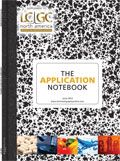Concentrating Phenolic Compounds Using the XcelVap Concentration System
Natural and synthetic phenolic compounds have been used in a wide range of applications, from antiseptics and fungicides to food additives.
Natural and synthetic phenolic compounds have been used in a wide range of applications, from antiseptics and fungicides to food additives. With the adoption of the Clean Water Act (CWA), many phenolic compounds were placed on a list of "Priority Pollutants." This list encompasses highly manufactured compounds which were found in water with a frequency of 2.5% or more (1). In addition, the entire class of compounds or specific compounds may be written into National Pollution Discharge Elimination (NPDES) permits to control release into public waterways (2).
Although the general analysis process contains extraction, extract drying, and evaporation steps prior to chromatography, this note will describe a procedure for the evaporation and concentration of organic solvent extracts containing phenolic compounds. It will make use of an automated pressure ramp during the concentration procedure to ensure that a maximum throughput of samples is achieved.

Table I: XcelVap conditions
Experimental
The XcelVap benchtop, heated water bath, nitrogen blow-down system (Horizon Technology) was used with 200-mL nipple tipped concentrator tubes. The following procedure was followed:
1. Set the XcelVap conditions using the parameters given in Table I and allow the bath to equilibrate.
2. Place 200 mL of dichloromethane (DCM) into each of the six 200-mL XcelVap concentrator tubes.
3. Using a spiking mix of phenolic compounds and surrogates prepared at 100 µg/mL, add 0.5 mL of the mix to each of the six concentrator tubes.
4. Start the XcelVap.
5. When complete, remove the rack from the XcelVap unit to prevent excess heat transfer to the extracts.
6. Using a pipette, transfer the concentrated extract to an auto-sampler vial, being sure to rinse the concentrator tube with DCM and bring the final volume to 1 mL.
Results
Table II shows the results of 12 replicate extracts concentrated using the procedure as given above. Each was concentrated using a single, automated pressure ramp and resulted in 0.5–1 mL of solvent. The extract was then brought up to a final volume of 1 mL prior to being injected onto the GC–MS.

Table II: Average recovery and precision of 12 replicate evaporations
Conclusions
The XcelVap Concentration System yields excellent recoveries for phenolic compounds when used in a fully automated capacity. With its large volume concentration tubes, the XcelVap System can be used with sample extracts from a wide range of extraction procedures including solid phase extraction (Method 3535), liquid-liquid extraction (Method 3510), continuous liquid-liquid extraction (Method 3520), TCLP extracts (Method 1311), pressurized fluid extraction (Method 3545), and ultrasonic extraction (Method 3550).
References
(1) http://water.epa.gov/scitech/methods/cwa/pollutants-background.cfm.

Horizon Technology, Inc.
16 Northwestern Drive, Salem, NH 03079
tel. (603) 893-3663, fax (603) 893-4994
Website: www.horizontechinc.com

Analysis of Greenhouse Gases by Gas Chromatography
May 15th 2024This application note demonstrates the use of SCION's 8500GC system for the analysis of key greenhouse gases—carbon dioxide, methane, and nitrous oxide—in a single atmospheric air matrix. Highlighting the system's excellent sensitivity and repeatability, this method is crucial for understanding emission sources and combating climate change.
Analysis of DEHP in Drinking Water by HPLC-DAD
May 15th 2024This application note outlines a method for detecting low levels of 1,4-Dioxane, a likely carcinogenic compound, in drinking water using SCION GC-MS technology. It details the procedure for analyzing water samples spiked with 1,4-Dioxane, achieving excellent sensitivity and low detection limits, demonstrating the method's effectiveness for environmental monitoring.
Plant Protection Product Impurity Screening by GC-FID with GC-MS Confirmation
May 15th 2024This application note from SCION Instruments delves into the meticulous screening of impurities in plant protection products using GC-FID, with GC-MS for confirmation. It emphasizes the necessity of identifying and quantifying impurities to comply with regulatory standards in industries such as pharmaceuticals, food, and agriculture. The study specifically examines eugenol, showcasing how to determine significant impurities for regulatory submission. The approach integrates GC-MS and analytical standards, ensuring precise impurity identification and quantification critical for product approval.